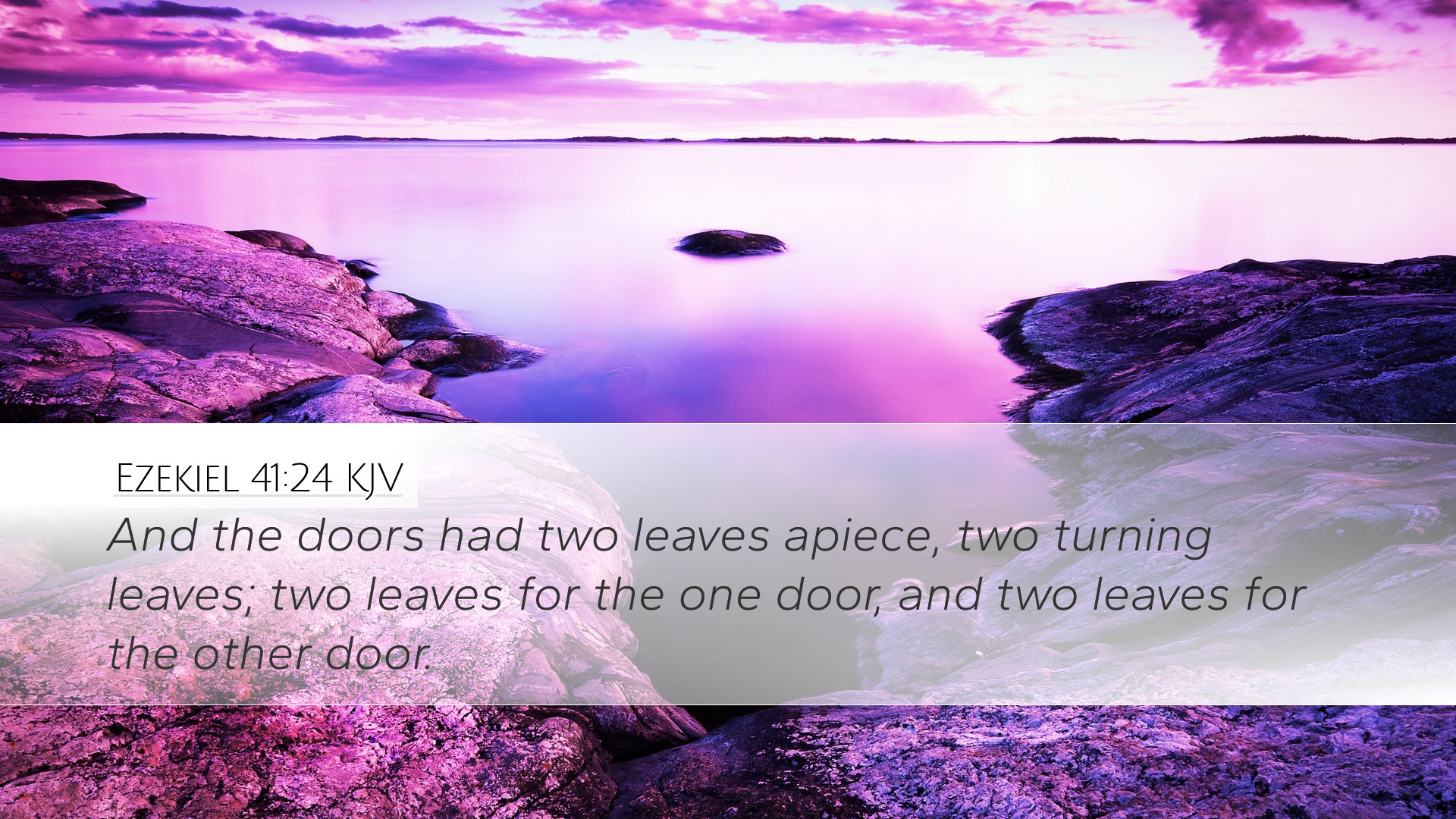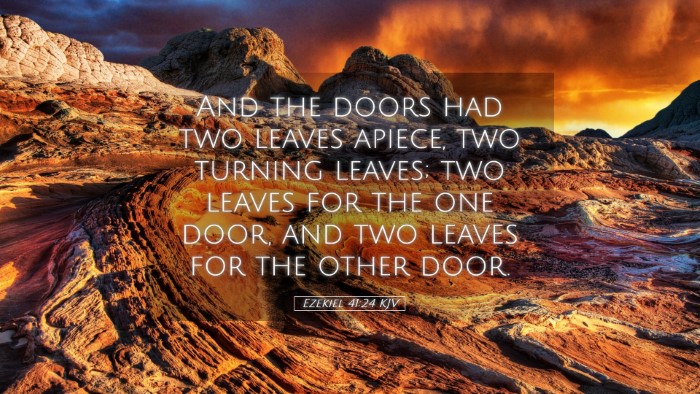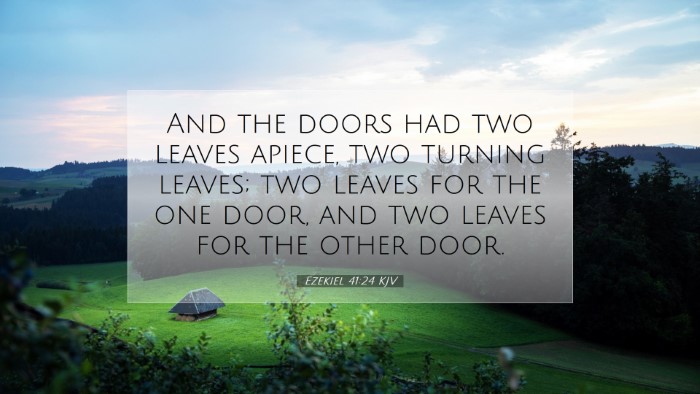Bible Commentary on Ezekiel 41:24
Ezekiel 41:24 states: "And each door had two leaves, two turning leaves; two for the one door, and two for the other door." This verse occurs within a larger context of Ezekiel's vision of the temple, emphasizing its measurements and design, which are laden with theological and symbolic significance.
Contextual Overview
The book of Ezekiel is part of the prophetic literature of the Old Testament. It encompasses various themes, including divine judgment and restoration, which reflect God's sovereignty over Israel and the surrounding nations. Chapters 40 to 48 deal specifically with the vision of the new temple, illustrating God's presence among His people.
Detailed Commentary
Structural Aspects
In this verse, the specification of two leaves for each door is notable. This detail emphasizes the functionality and magnificence of the temple's design.
-
Doors as Symbols:
Doors in Scripture often symbolize access to the divine. The double-leaf doors suggest a significant entrance, portraying both invitation and separation. They indicate that entering requires preparation and recognition of holiness.
-
Design and Functionality:
The description ties into the broader theme of the temple as a place where heaven meets earth. The double leaves of the doors show completeness, confirming God's character of perfection in design. As noted by Clarke, the architectural beauty reflects divine order.
Theological Implications
The doors' design invites deeper theological reflection. The two leaves can be interpreted as representative of a covenantal relationship, illustrating that while God is accessible, His holiness demands careful approach.
-
Covenant Relationship:
Matthew Henry emphasizes that the entering into God's presence is a covenant act. The double leaves can signify God’s merciful invitation while affirming His righteous standards.
-
Access to God:
The doors serve as a reminder of Christ as the ultimate door to the Father (John 10:9). Just as the doors in Ezekiel’s vision allow entry, so does Christ grant believers access to God. This connects to the themes of restoration and reconciliation in the prophetic literature.
-
Judgment and Mercy:
Barnes highlights that every aspect of the temple, including the doors, reflects God's judgment and mercy. The doors offer a means of escape from judgment, indicating God's provision for repentance.
Practical Applications for Believers
Understanding this passage leads to crucial applications for modern believers.
-
Preparation for Worship:
In approaching God, believers should prepare their hearts, recalling the holiness of the temple. The idea of two leaves symbolizes a thorough preparation, reminding worshippers that access to God requires sincerity and devotion.
-
Embracing God’s Invitation:
The design reflects God's desire for relationship. This encourages believers to embrace and make use of the access given through Christ, fostering a personal and community-oriented worship life.
-
Living in Holiness:
The physical space of the temple is a metaphor for the heart of the believer. As the temple is designed for holiness, Christians are called to live in a manner that honors God's presence in their lives.
Conclusion
Ezekiel 41:24 encapsulates profound sentiments concerning God’s holiness and accessibility. As commentators like Albert Barnes, Adam Clarke, and Matthew Henry elucidate, the details of the temple structure are not merely architectural but serve deeper theological purposes. For pastors, students, theologians, and Bible scholars, this verse provokes reflections on how they approach God, emphasizing the vital balance of reverence and relationship inherent in worship.


